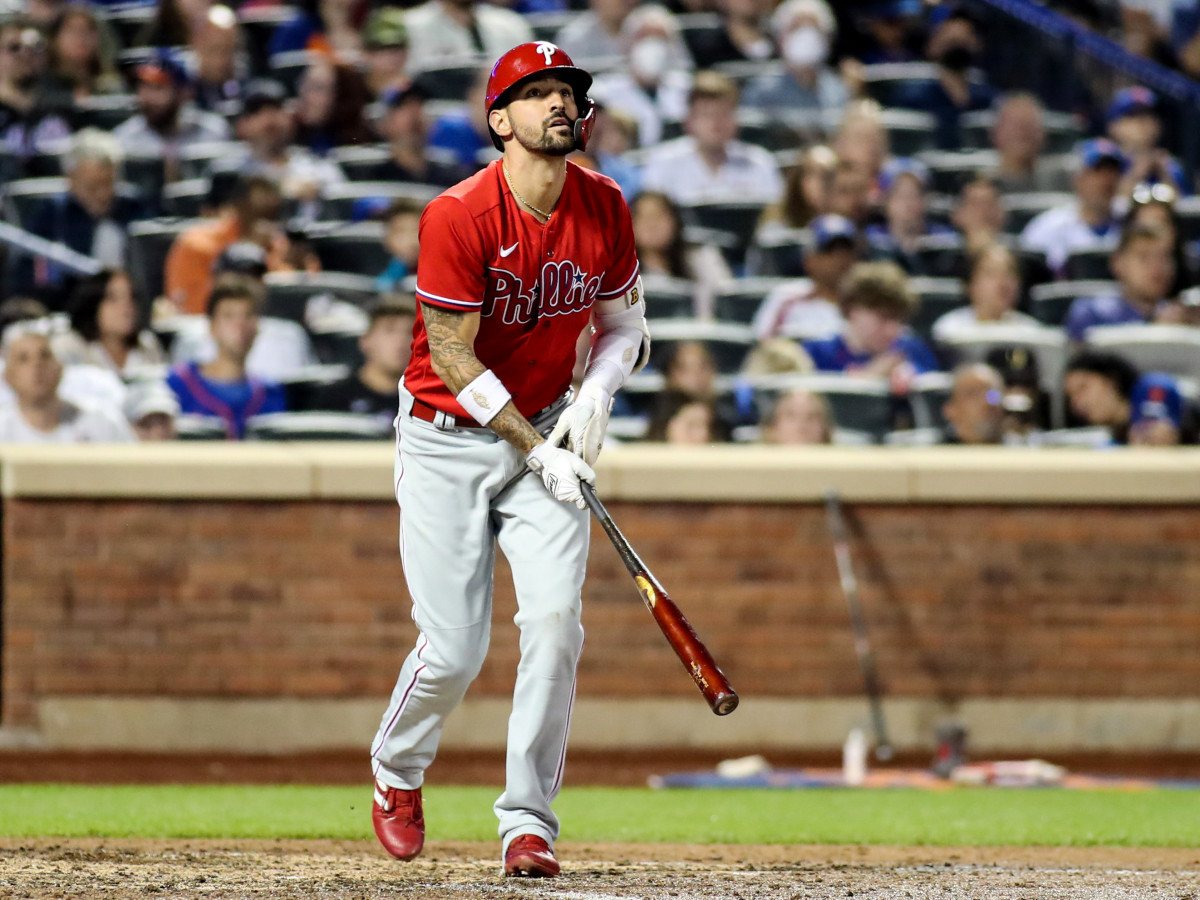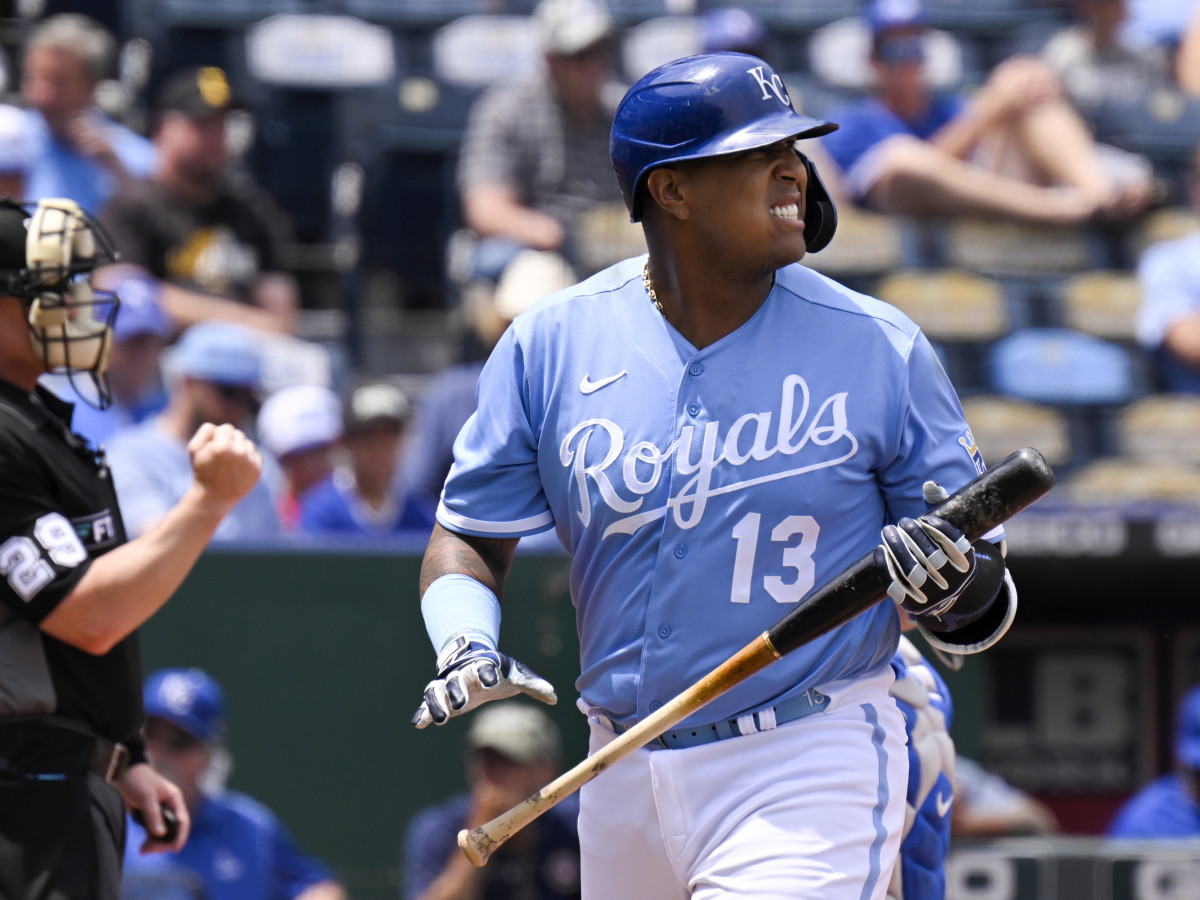How Concerned Should We Be About These Struggling All-Stars?
Welcome to The Opener, where every weekday morning during the regular season you’ll get a fresh, topical story to start your day from one of SI.com’s MLB writers.
They were once All-Stars, glittering like gold. Now, they could use a little fuel themselves.
MLB released its ballot for the 2022 All-Star Game on Wednesday, which means voting season is officially underway. While there will be plenty of first-time All-Stars making their way to Los Angeles, other more established players will be aiming to return to the Midsummer Classic. For some, the push to get back to the All-Star Game is going better than others.
Several of them have seen their stock dip considerably, and while it’s almost certain they won’t get another All-Star nod this year, there’s still a lot of season left to turn things around. Let’s take a look at five 2021 All-Stars who have lost some shine and weigh how likely it is that they’ll rebound from here on out.
Sometimes, the world is gonna roll you. For these five players, there’s still time to take the backstreets and glow once more.

OF Nick Castellanos, Phillies
Castellanos’s value to the Phillies has been hindered a bit by Bryce Harper’s elbow injury, which has kept the two-time MVP from playing the field for most of the season. That’s forced Castellanos to play right field every day, and the results have been disastrous. He ranks second-last at the position in both outs above average and FanGraphs’s defensive rating. Philadelphia didn’t envision needing the 30-year-old to play much defense when the team signed him to a five-year, $200 million deal this winter, but that’s been the reality for the season’s first two months.
The porous glove work would be more tolerable if Castellanos were producing at the plate, but that hasn’t happened, either. He hasn’t hit for much power, with his .159 isolated power (ISO) ranking as his lowest since 2014, and last month he went 81 plate appearances between home runs. He’s swinging at pitches out of the zone more often than ever before.
Despite that, his strikeout and walk rates are right in line with his career norms, and his expected batting average (.277) and expected slugging percentage (.513) suggest that he’s been the victim of some bad batted-ball luck. Better days are likely ahead for Castellanos at the dish (defense, though, remains another story).
WERTHEIM: The Absolute Improbability of Nick Castellanos’s Drives Into Deep Left Field
OF/2B Whit Merrifield, Royals
Merrifield has been among the most consistent players in baseball throughout his career. Since 2017, he’s never missed more than 17 games in a season and hasn’t missed a game at all since the start of the ’19 campaign. He’s posted an OPS+ above league average in four of the past five years coming into this season and led the American League in stolen bases three times during that span.
So far, though, he hasn’t looked much like his old self. His ISO has dipped to .093, which would be the lowest of his career, and his line drive rate (20.8%) is also a career worst. His contact numbers, though, are mostly in line with what he’s produced in years past. Merrifield’s hard hit rate of 30.8% would actually be his best since 2018, and Statcast data indicates he’s been among the league’s unluckiest hitters: The difference between his expected wOBA (.326) and actual wOBA (.254) is the fifth-highest among hitters with at least 200 plate appearances. Merrifield’s recent results—he’s batting .270/.321/.405 in his last 18 games—suggest that a turnaround isn’t far off.
C Salvador Perez, Royals
While the outlook for Merrifield is looking a bit more positive, the same can’t be said for his Royals teammate. Perez spent some time on the injured list in May with a thumb injury, but hasn’t found his stride offensively at any point this season. He’s always struck out a lot and walked very little, though this season, he is striking out at a career-high 28.3% rate, while his 3.2% walk rate is the second-lowest among qualified MLB hitters.

Making matters worse, the reigning home run champion isn’t doing nearly the same amount of damage when he does make contact with the ball. He’s hitting the ball in the air more often, but his 44.0% hard hit rate is his lowest in four years. That, plus a ball that doesn’t travel as much as it has in recent years, has produced a lot of easy fly-ball outs. Perez had a two-hit game in Kansas City’s 8–4 win Wednesday—his third multihit effort in five games—though there are few other signs that a meaningful turnaround is on the way.
SP Trevor Rogers, Marlins
Last year’s National League Rookie of the Year runner-up appeared to be an ace in the making after posting a 2.64 ERA with 157 strikeouts in 133 innings. But 2022 hasn’t been kind to Rogers so far, and issues with his fastball appear to be a key reason why. Opposing hitters had a .222 batting average with just five home runs against Rogers’s heater last season, but are teeing off on the pitch in ‘22, with seven home runs already and a .333 batting average through 108 plate appearances.
His average velocity, spin rate and movement on the pitch from last year to this year are virtually identical, so it’s tough to pinpoint exactly what’s gone wrong. But batters have posted an .847 OPS against Rogers through 10 starts to this point, and he has a poor 1.86 strikeout-to-walk rate across 45 innings. Rogers hasn’t induced swings on pitches outside the zone as often as he did a year ago, and thus has seen his swinging strike rate dip from 14.0% to 9.7%. Perhaps these are natural growing pains for a 24-year-old pitcher, but adjustments need to be made for the former first-round pick to rediscover his full potential and solidify what’s supposed to be an exceptional Marlins rotation for years to come.
OF Jesse Winker, Mariners
Landing Winker in a trade with the Reds seemed like a coup for the Mariners, but so far the 28-year-old hasn’t lived up to the hype in Seattle. From his debut 2017 season through last year, Winker had a career slash line of .288/.385/.504, with a 132 wRC+ that ranked 12th among all outfielders during that span. So far, though, he’s managed a meager .209/.315/.296 line through 56 games, with a .087 ISO that ranks behind light hitters like Adam Frazier—another ’21 All-Star starter who is underperforming this season, also his first year with the Mariners—and Miguel Rojas.
Despite two months’ worth of poor results, Statcast still views Winker as a powder keg ready to blow. He has the largest gap between his xwOBA (.362) and wOBA (.281) among hitters with at least 200 plate appearances, and continues to make contact and draw walks at an elite rate. He’s not getting shifted against or pitched all that differently (at least from a pitch-type standpoint) than he has in recent years, so it’s feasible that his slow start to this point can actually be attributed to poor luck.
I have no idea whether Winker is the superstitious type. But if he’s even a little stitious, perhaps a four-leaf clover or coin toss into a fountain is just what’s needed for his fortunes to shift for the better.
More MLB Coverage:
• Hot Seat Index: Which MLB Managers Could Be Fired Next?
• Joe Maddon’s Firing Deepens Angels’ Era of Instability
• The Phillies Had No Choice but to Fire Joe Girardi
• The Absolute Improbability of Nick Castellanos’s Drives Into Deep Left Field
• Jeremy Peña Is MLB’s Most Professional Rookie
